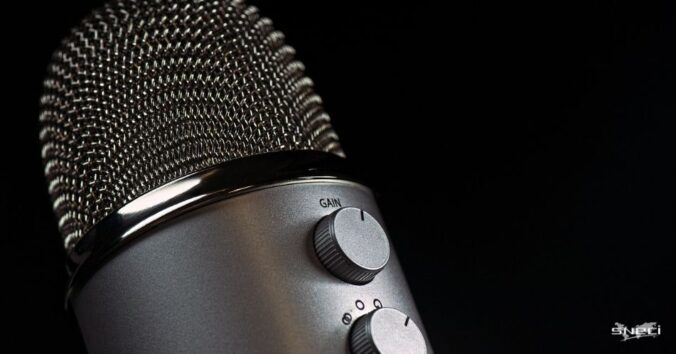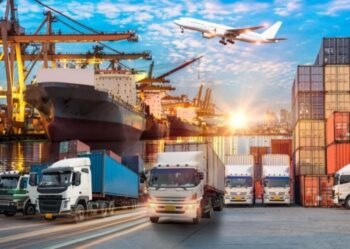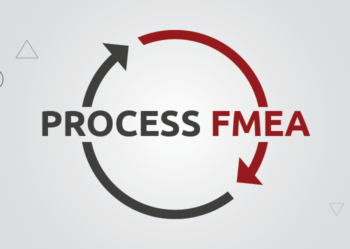Interview of Stanislas Bailly, Managing Director of SNECI for “BE MY GUEST”

Last December, Stanislas Bailly, SNECI’s Managing Director, was interviewed in the 6th episode of “BE MY GUEST”, the bi-monthly B2B program dedicated to automotive suppliers, garage equipment, maintenance and technical control manufacturers, and mobility startups, produced and hosted by Stéphanie Cansell, to talk about international support for automotive suppliers.
According to Claude CHAM, Honorary President of the FIEV, in a context of upheaval in the automotive industry, the only solution for equipment manufacturers is to diversify their customer portfolio and markets.
International development is therefore essential, but is it better to develop exports or invest directly abroad? What are the advantages of internationalization and what to avoid? These are some of the questions to be addressed by Stanislas Bailly, Managing Director of SNECI, world leader in the continuous improvement of industrial and commercial performance internationally.
So Stanislas, first of all a word about SNECI. SNECI is a family business that is 70 years old. You have 10 subsidiaries around the world, 450 experts working for you, and more than 400 customers. Can you tell us a little more about your company?
SNECI is a family-run company with two core businesses, the improvement of industrial performance on one hand, which is deployed with manufacturers and equipment suppliers for everything that is improvement in the factories, research, upgrading, and evaluation of suppliers, industrial transfer, and assistance in starting up new factories without forgetting the improvement of logistics.
And on the other hand, the second axis which is the international commercial development which we will talk about in more detail today, and where we work mainly with equipment manufacturers to accompany them in their international growth on all the geographical zones where we are established.
When you are a French equipment manufacturer and you want to develop internationally, is it better to export or internationalize?
There is no ready-made answer, it depends on the countries you wish to export to, the products you are going to export, the local regulations (do the local rules mean that you are obliged to produce locally or can you export from your current production base, especially France).
Also, you have to consider what the full cost of acquisition is going to be, since we see it with the explosion of shipping costs today; producing as close as possible to your customers represents an economic advantage and also an advantage in terms of production time.
So, I would say that you have to know how to adapt, to think about your export strategy and the associated industrial footprint before launching yourself with different clients.
Have you seen an increase in internationalization among equipment manufacturers recently?
Yes, as you said in the introduction, we have more and more of them, the big equipment manufacturers finally, they have gone to the international market and it is the international market that has been driving their growth for the last twenty or thirty years with great success.
I think of all the big groups that have gone international, the ETIs have also been doing it for a certain number of years and then for some time now we have seen the SMEs realizing that unfortunately with the drop in automobile production in France, in order to find growth relays, it is inevitable to go international.
Are the production conditions in France also the cause of this internationalization, including taxation?
It is true that we talk a lot about production taxes, but there is also the labor cost part.
Today, in an industry as competitive as the automobile industry, the equipment manufacturers look at these criteria before making decisions on the location of their customers, who, as I said, produce less in France today than a few years ago, since 3 and a half million vehicles were produced in France in 2004-2005.
Last year we were at 1.7 million, except for the COVID crisis, but the cruising speed is more like two million, so we have still lost 40% in fifteen years.
This may not get any better with the current context, especially with the recent shortages…
As far as projections are concerned, we think that we will remain close to a level of 2 million, so will we be at 1.7 million or close to 2 million, it’s hard to say, but France has a card to play, for sure, with the electrification of the vehicle, on the one hand from the manufacturers’ side, but also from the side of the equipment manufacturers, who have a know-how. Not to mention the relocation of French industry.
But before talking about relocation, we must also think about the localization of tomorrow’s technologies, and I’m thinking in particular of everything related to the electrification of the vehicle, the power electronics part, but also everything related to connected vehicles with the ADAS part.
In this respect, France has a real card to play with the equipment manufacturers, many of whom are currently focused on this transition and on training their teams to meet the needs of the automotive industry of tomorrow.
So, internationalization but also relocation for some?
Exactly, we have a certain number of customers who, in the last few months, between the awareness and the decision, there is still a certain gap, but we are beyond the awareness today, as I was saying with the increase in the cost of transport, with the shortages as well, a certain number of customers have come to us to ask us to see if certain components which, today, were bought in distant countries, could be repatriated closer to France or Europe.
While it is important to localize certain strategic sectors for the automotive industry, it is also important to grow outside the country in order to develop. What are the advantages of internationalization?
The advantage is obvious in terms of business gain. I think that for a company that has internationalized there are also gains from an organizational point of view, it requires structuring, it also requires flexibility concerning the different ways of doing business in other countries and also you are confronted with more competition so finally also more technology.
So, having this economic intelligence on a daily basis can feed you and make new solutions emerge that you can then propose to your clients globally.
So, I also imagine, as you mentioned earlier, there are transport costs indeed since transport costs have increased by 8 times, but there is also perhaps a problem of protectionist barriers?
Yes, as I was saying, each country has its own specificities, each geographical area, in the broadest sense, tries to protect itself from a business point of view, you have certain actions that are underway, notably between different equipment manufacturers or different associations of equipment manufacturers, to avoid anything related to dumping.
And on the other hand, you have customs rules that are evolving. We talked a lot about this a few years ago with the implementation of tariffs by former President Trump in the United States, but these are things that all the players in the automotive industry are constantly looking at, whether it is the manufacturers or the equipment suppliers, because once again we are in an extremely competitive industry and therefore the industrial and supply chain scenario must be adapted according to the evolution of regulations.
Do you see a tendency for OEMs to manage more and more services/products locally rather than from France/Germany/…? For example, their commercial/sales/business development department. Especially for Africa.
It is clear that in order to be as close as possible to market expectations today you need to be local with teams that understand the needs of local markets.
We have talked about the OEMs, who when they developed in China around 20 years ago, set up design centres to design cars specifically for the Chinese market, in particular with the back leg-room larger, as in China it is statutory to have more space at the back.
This is only one example among others, like eco-drive pleasure, habitability, vision; that are, each time, different depending on the countries you are located and that need to be taken into account in your development.
In this respect, SNECI is very well equipped since you are established in 10 countries and your local teams are actually local people.
Yes, this is one of our specificities, historically based in France since 1952 and for the last fifteen years or so, we have been expanding internationally to support the growth of the automotive market and French players. As I was saying, first in Europe and then in the rest of the world, with about ten locations today, and very quickly we wanted to set up a local management team to get to know the ways of doing business in the different countries, to understand the specificities, the unspoken aspects in particular.
We don’t do business in the same way at all, just in Europe between Germany and Italy, so imagine between France and China or Korea. And also, this allows our managers, our local office directors, to be closer to their teams than an expatriate could be, even an expatriate who has been there for many years, which means that we have an extremely low turnover of our international teams, or even none at all in many regions.
In China we haven’t had any departures for more than two years, whereas normally in China you have 20-25% turnover per year.
What are the main difficulties encountered by French equipment manufacturers or companies setting up abroad?
I would say that the main difficulty is perhaps a question of mindset, we often talk about the Germans you know, who hunt in packs, and who are very good at international business. Their industry, whether it is at the level of the manufacturers but also of the equipment manufacturers, is very strong from an export point of view. And finally, developing internationally requires patience and resilience, values that we have at SNECI.
When we accompany the equipment manufacturers with whom we work internationally, the first thing we try to explain to them is: “Listen, we will accelerate you, we will open the doors of the market more quickly than if you had gone there by yourself because we have a local network. But you need to know that your competitors on the ground are going to be active as well.
We like to win the market the first time and grow exponentially, but it’s not always the case, you have to plant some seeds and then once you get going and start to be known in a market it becomes easier.
There is really this first step of investment necessary financially but especially humanly, of the top management of the company which must turn to this idea that growth and salvation will pass by the international.
International is not for everyone, you were talking about SMEs earlier, I imagine that you need to have a certain size and a certain turnover to set up, from what level can you imagine starting to develop internationally?
Historically, I would say that for suppliers of standard parts we consider that the critical size is finally a nice ETI which will be between 50 million and 1 billion euros of turnover.
It will normally have the technical skills in terms of R&D resources to develop a specific product corresponding to the market’s needs, but also the resources, as I said, both financial and human, to have dedicated in-house teams on the international level to be successful in this approach.
How much does it cost to have an international subsidiary?
So that’s why I say up to 1 billion euros, because beyond a certain size you can say to yourself: “I’m going to multiply my international locations”.
On the other hand, below that size, it is not in your interest to multiply fixed costs.
We know that a subsidiary, and I’m only talking about a commercial subsidiary, if you set it up on your own, it costs several hundred thousand euros, and I don’t even think that everything belongs to the investment behind the manufacturer.
So in the end it’s going to be a trade-off between saying, am I going to tie up this money to be able to set up internationally or am I going to reduce my investment by going through a company that is already established on the spot, that already knows the market.
So, in general, this is the type of company we work with, even if more and more with the evolution of the vehicle towards electrification and autonomous vehicles, we work more and more today with small and medium-sized companies and start-ups which are working on extremely innovative products or even services, such as mechatronics, cyber-security, etc., which are smaller, but which finally have the know-how and the possibility to develop internationally.
Find the rest of the interview in this new article and if you wish to have information on how to be accompanied internationally by our business development teams, contact Laura by email laura@sneci.com who will be happy to answer your questions.






